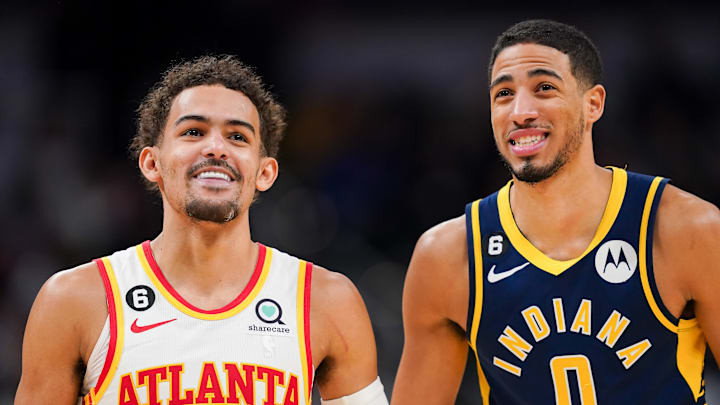We may have witnessed the single greatest team playoff run in the history of the NBA just a few short months ago.
Tyrese Haliburton led the charge in upset after upset, paving the way for his Pacers to reach the Finals, where they ultimately fell just one win short of an NBA championship. The argument could certainly be made that they would've won it all had it not been for a heart-wrenching stroke of bad injury luck.
Not only did the Pacers produce one of the most entertaining and successful playoff runs in modern basketball history - they also revolutionized the way the sport is played at the highest level.
Prior to this year, the 'meta' for success in the NBA had long been spacing around a star, allowing the league's elite talents to have room to work and produce open looks for themselves and their teammates. Often, these squads consist of two (or more) elite talents, taking turns slicing and dicing top-end defenses. Think LeBron and AD in 2020, or Jokic and Murray in 2023.
Very rarely do teams alternate their top performer game by game - but defying all precedent, defying all logic, that's exactly what last year's Pacers team was able to do.
Haliburton was undoubtedly the engine that drove the team to success, but the way in which he led the team didn't always translate to having the best box-score performance at the end of the evening. His selfless playstyle set the table for his teammates to eat - game after game, a different player feasted by virtue of the beautiful movement of the Indiana offense.
But enough fawning over the Pacers - let's talk about the Hawks.
Last year's Pacers are strikingly similar to the current Atlanta Hawks.
The closer you look at last year's Pacers roster, the more you realize an extreme number of similarities exist on a player-by-player basis.
Let's begin with the engine. If there's a single player most similar in playstyle to Tyrese Haliburton, it's Trae Young. After improving his assist metrics every single year he's been in the league (culminating at a whopping 11.6 APG last year), a serious debate would need to be held to determine the best playmaker in the league between Haliburton and Young, were it not for a certain Serbian savant.
Another key similarity is the archetype of the rim-protecting 3-point splashing titan - the Pacers had Myles Turner, and this year's Hawks have Kristaps Porzingis. Between you and I, I'd certainly pick Porzingis to be my anchor every day and twice on Sunday - were it not for health. If Porzingis can simply stay on the court, he'll likely exert even more influence on the 5-out spacing, elite rim protection scheme that Turner exemplified so well last season.
Yet another similarity is the presence of elite perimeter defenders to flank the offensive engine of each team. Haliburton had Aaron Nesmith and Andrew Nembhard alongside him throughout the majority of the playoffs, and Young has the luxury of teammates Dyson Daniels and newly-acquired Nickeil Alexander-Walker to protect the perimeter.
If there's one takeaway that exemplifies the similarity between the two title contenders, though, it's their point forwards. Indiana benefitted supremely from the presence of Pascal Siakam, who provided much-needed scoring and versatility with the outcome of the game hanging in the balance.
Atlanta's Jalen Johnson figures to be an even more potent Siakam on the offensive end - his eye-popping athleticism, playmaking prowess, and improved shooting touch lend to the notion that superstardom may not be far-fetched in the near future.
With all of these key on-court similarities, though, it's ultimately up to coach Quin Snyder to implement a team-first scheme similar to Rick Carlisle's brilliance. If Snyder can put the pieces of the puzzle together, though - don't be shocked if the Hawks' beautiful game transcends even the lofty standard set by last year's Pacers.
